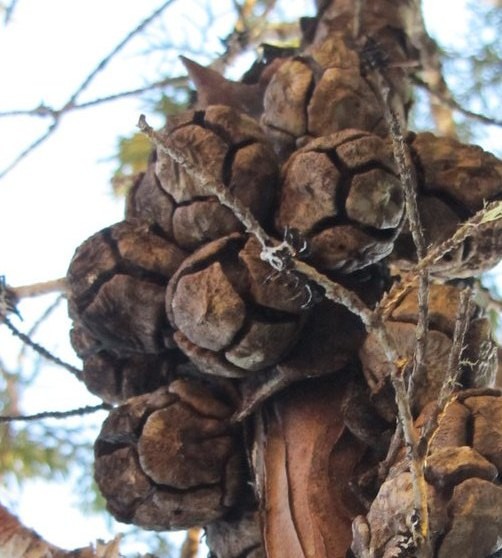Santa Cruz Cypress
(Cupressus goveniana abramsiana)

Description
The Santa Cruz cypress (Hesperocyparis abramsiana; formerly classified as Cupressus abramsiana) is a species of North American tree within the Cypress family. The species is endemic to the Santa Cruz Mountains within the Santa Cruz and San Mateo counties of west-central California. The U.S. Fish and Wildlife Service listed the species on the Endangered Species Act in 1987 due to increasing threats from habitat loss and disruption of natural forest fire regimes. In 2016, the conservation status of the Santa Cruz cypress changed to Threatened. The cited reasoning was a decrease in threats against their habitat. Individuals can grow 10 to 25 meters tall with branches 5-10cm in diameter covering the trunk to nearly the ground. The shape of the tree is pyramidal, with branches longer toward the base. The tree’s leaves are light green and scale-like and can grow up to 15mm in length, persisting on branches for many years. The bark of the trunk is fibrous with thin grey vertical stripes. Individuals begin to produce cones at 11 years in age. Pollen cones can grow up to 4mm long and produce large amounts of pollen that spread in the wind. Female seed cones are produced annually on the tree and grow up to 20 to 30mm in diameter. They remain on the tree until the supporting branches die, typically as a result of natural fires. Individuals can live beyond 100 years, with one of the oldest individuals identified as being between 127 and 162 years old. The habitat of the Santa Cruz cypress consists of the chaparral and closed-cone pine forest communities in the Santa Cruz Mountains. The habitat ranges from 300 to 750m in elevation, consisting of poorly developed sandstone or granitic soils. The climate of this area produces cool, wet winters and hot, dry summers, and natural fire regimes periodically destroy the vegetation in the area. The Santa Cruz cypress have evolved to be dependent on these fires for reproduction. The trees are obligate seeders, meaning they do not regenerate after burning up in a fire. Instead, the seeds germinate after the fire to minimal competition. They are then able to regenerate and grow the population. If fires are too frequent, seedlings will not be able to reach reproductive age. If fires are too infrequent, the trees do not reproduce often enough to maintain population size.
Taxonomic tree:







